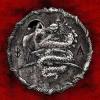While I don't have a lot of experience attracting ants at night (I am trying it this year for sure), I'm guessing that, in northern climates, the night temperatures need to be high enough to give ants the metabolic rates necessary for flight. In Maine right now, night temperatures seem to stick around 60 degrees Fahrenheit, which I don't think is enough. I only get flies, moths, and beetles.
It seems a little earlier for Lasius claviger to be flying, so I'll bet it is their close relative Lasius interjectus. If you want to find this social parasite, keep an eye on other Lasius nests in the late afternoon and morning, which they will actively try to invade.
If you've enjoyed using my expertise and identifications, please do not create undue ecological risk by releasing your ants. The environment which we keep our pet insects is alien and oftentimes unsanitary, so ensure that wild populations stay safe by giving your ants the best care you can manage for the rest of their lives, as we must do with any other pet.
Exotic ants are for those who think that vibrant diversity is something you need to pay money to see. It is illegal to transport live ants across state lines.
----
Black lives still matter.


















